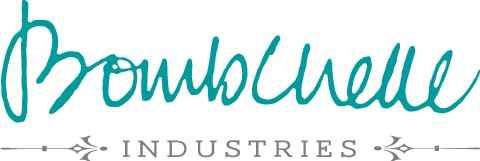Wanting something to look good often gets a bad rap. Should you buy the plain thing or splurge for the pretty? If you splurge on the pretty, are you going to feel like the extra money was a waste later?
In Making Ideas Happen, the authors talk about aesthetics & the idea that attraction breeds loyalty. The book relates a tale of Bob Greenberg and his “admittedly obsessive” morning routine of prioritizing and creating action steps. A certain kind of paper must be used, a certain brand of fountain pen (only Pelikan brand, a larger one with blue ink and a thinner one with brown ink), and so on and so forth. It seems totally absurd to an outsider, but the little details of his approach keep him engaged with his system and feeling loyal to it. The design of tools, especially something you’re using on a regular basis, can affect how eager you are to use them.
The authors hit on something that I find a key thing to consider when talking about the aesthetic of tools – aesthetics doesn’t just cover visuals, it’s a whole experience of engagement in all your senses. Aesthetics draw you in; they make something an experience & not just a use. Of course you’ll use something that’s more engaging! & why should you feel shallow about it?
The section on aesthetics in Making Ideas Happen closes with an assertion from Donald Norman – someone that I’ve never heard of, but who is apparently a “usability guru” – that “attractive things work better”. Donald related a tale to a journalist about testing out color monitors when they first became available commercially, because he wanted to see if the price increase was justified. Quoth the book, emphasis mine:
“I got myself a color display and took it home for a week,” Norman recalled. “When the week was over, I had two findings. The first finding was that I was right, there was absolutely no advantage to color. The second was that I was not going to give it up.” In her analysis of Normon’s findings, Postrel explains, “The difference lay not in ‘information processing’ but in ‘affect’, in how full color monitors made people feel about their work.”
In other words, the aesthetics of the tools you use to make ideas happen matter.
And here’s an example from my own life:
You’ve probably heard of Evernote – without going into intense detail, it’s sort of a cross-platform note-storage system, where you can store pictures, text notes, PDFs, etc. under certain categories, and have it sync from your computer to the online account to your iPhone or Android.
Since I’d got a new phone that could actually do something like that, I decided to give Evernote a go again, as I hadn’t found it very useful with just a computer. It worked. That’s really all you can say. It did what it was supposed to do, it did it all right (although, I had trouble with the Android app, actually), it didn’t do anything more.
And then while browsing around yet another “cool apps” list (I spent at least 5 hours doing that the first week I had my phone, eesh), I found a mention of Springpad. It looked like a similar service, with a few differences in tools. Very cool differences, I might add, but this isn’t the post to go into detail – just check out their website.
But the key difference? Springpad seemed to have actually hired designers. You can set a specific background for your home screen that appears across all platforms, pick specific colors for specific notebooks, and organize visually. Everything looks fabuous.
This is all aesthetics. All “shallow” features. But the thing is, the experience & engagement of it took using Springpad from being a task to being fun. And that, in turn, made me more organized. The aesthetic engagement turned me from a user into a raving evangelist. I’m ready to go sing the praises of Springpad on a street corner. (Maybe during SXSW.)
The moral of the story?
Next time you’re waffling, not knowing to go with plain-and-functional or costs-more-but-pretty? Buy the pretty one. Merge form with function. Refuse to feel bad about it.
